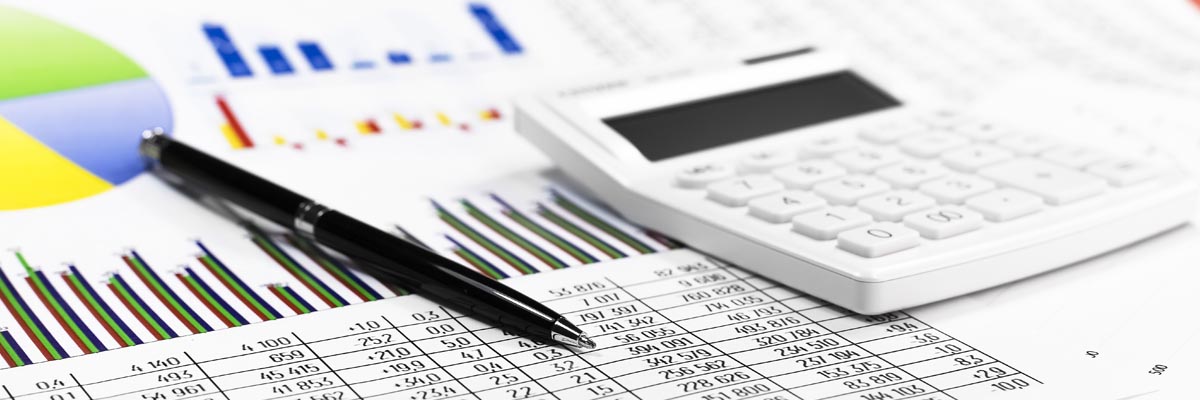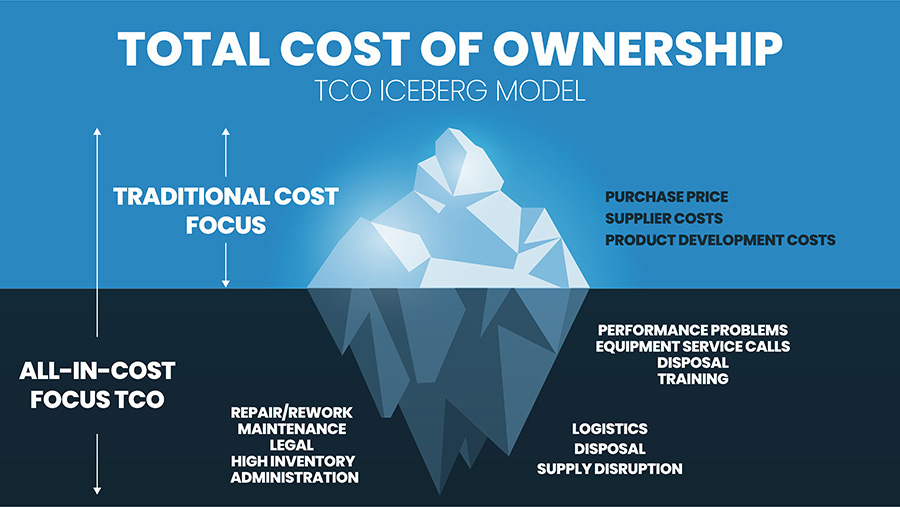Justifying Your Next Cleaning Machine Purchase: Tips for Facility Managers
Facility managers often face the challenge of justifying the purchase of new cleaning equipment. With limited budgets and numerous demands, convincing upper management to invest in new machines can be challenging. However, by following a few tips and strategies, facility managers can make informed decisions and successfully justify their cleaning machine purchase.
- Start with a thorough analysis of your current process
- Calculate the equipment return on investment (ROI)
- Consider other factors besides the purchase price
- Think about the entire cleaning process, not just the equipment function
- Consider leasing versus buying equipment
- Ask for help

Tip #1: Start with a thorough analysis of your current process
First, gathering data and analyzing the current cleaning procedures and equipment in use is essential. Evaluate the facility's square footage, the cleaning staff's efficiency, and any storage space constraints. Identify specific areas that could benefit from new equipment.
- Highlight the labor savings that new equipment can bring. For example, a ride-on floor scrubber can reduce the time and effort required for floor cleaning.
- Emphasize the improved cleaning procedures that new equipment can offer. Identify new tasks that another service provider might currently do.
Tip #2: Calculate the equipment return on investment
Calculating the return on investment (ROI) is crucial in justifying the purchase of new cleaning equipment. Facility managers must demonstrate the investment's financial benefits to upper management. By considering factors such as initial cost, maintenance costs, labor savings, and improved productivity, facility managers can accurately calculate the ROI and make a compelling case for purchasing new equipment.
The initial cost of the equipment is one of the primary factors to consider. Facility managers should compare different models and brands to find the best value for their budget. It is essential to weigh the initial cost against the long-term benefits and savings the equipment can provide.
If the new equipment is more productive than the old equipment, calculate the number of hours saved annually and multiply it by the hourly cost of the employee, including benefits. This is the annual labor savings. Divide the annual labor savings by the equipment cost; the result, expressed as a percentage, is the Equipment Return on Investment (ROI).
Think about what you would do with the time saved.
One of the significant benefits of new cleaning equipment is the potential for labor savings. Consider how the equipment can reduce the time and effort required for cleaning tasks, making the cleaning staff more efficient and productive. By estimating the labor savings that the new equipment can generate, facility managers can demonstrate tangible opportunities to expand the scope of a program to upper management.
Tip #3: Consider other factors besides the purchase price
When justifying the purchase of new cleaning equipment, facility managers should consider more than just the purchase price. While these factors are essential, others should be considered to make a well-rounded decision. By looking at factors such as durability, efficiency, versatility, and safety features, facility managers can ensure that they make the best choice for their needs. Considering these factors can help avoid potential problems. Thoroughly research and compare different models to find the equipment that offers the best overall value and meets the facility's specific requirements.
Total Cost of Ownership

When considering the purchase of cleaning equipment, it is essential to consider the Total Cost of Ownership (TCO) concept. TCO goes beyond just the initial purchase price and includes all costs associated with owning and maintaining the equipment.
In addition to the purchase price, TCO factors in maintenance and repair expenses, routine upkeep, and replacing worn items. It takes into consideration the lifespan of the equipment and the projected costs over that period.
Calculating TCO involves considering various elements such as warranties, labor costs, routine maintenance, and replacing wear items like brushes and squeegee blades. It is crucial to assess the reliability and durability of the equipment, as well as the availability and affordability of replacement parts.
Investing in high-quality equipment with a lower TCO can lead to significant savings over time. Choosing equipment that balances cost and performance is crucial while factoring in potential maintenance and repair expenses. By carefully considering TCO, you can confidently justify the purchase of cleaning equipment, knowing that it will deliver value and efficiency over its lifespan.
Tip #4: Think beyond cleaning machines
Sometimes rephrasing a problem can lead to new, unexplored solutions. Replace "How much should I spend on a floor scrubber?" with "How can I clean this area for the lowest total cost?", for example. The answer to the second question requires you to examine the entire process, not just the cost of a piece of equipment.
Other questions that might impact your decision start to come into focus:
- What floor finish should we be using?
- Should we use brushes or pads?
- What chemicals should we use?
- Can we improve dust mopping?
- Should we use a floor finish that requires burnishing?
- Could we lower costs with a bulk chemical or a dilution control station?
- What would be a greener, more sustainable process?
Tip #5: Consider if you should lease or purchase the equipment
When considering investing in cleaning equipment, it's important to weigh leasing or purchasing options. Leasing can be a beneficial option for businesses that have limited storage space or fluctuating needs. It allows for access to the latest equipment without incurring upfront costs and provides flexibility to upgrade or change equipment as needed. On the other hand, purchasing the equipment may be more cost effective for businesses with consistent and high-volume cleaning requirements in the long run. It provides the ownership advantage and allows for customization based on specific cleaning procedures and staff preferences. Analyzing factors such as budget and long-term goals can help determine whether leasing or purchasing is the right decision for your organization.
Benefits of owning the equipment
Owning cleaning equipment can lead to significant cost savings over time. While the initial purchase price may seem daunting, these costs can be quickly recouped when factoring in labor savings.
When considering the cost of ownership, it is crucial to assess the equipment's initial purchase price, maintenance costs, and overall lifespan. While some may be hesitant due to maintenance expenses, it is important to remember that owning equipment can be a long-term investment. By conducting regular maintenance and repairs, facility managers ensure their cleaning equipment's longevity and optimal performance, resulting in long-term cost savings.
Benefits of leasing the equipment
Leasing cleaning equipment can offer several benefits for facility managers. One of the key advantages is the flexibility it provides. Instead of committing to purchasing expensive equipment outright, leasing allows facility managers to have access to the latest cleaning equipment without the hefty upfront cost. This allows them to explore different options and try out new technologies without long-term commitment.
Another advantage of leasing is the ease of equipment upgrades. As cleaning technology advances, facility managers can easily upgrade their leased equipment to stay up-to-date with the latest industry standards. This allows them to continually improve their cleaning processes and efficiency without the burden of having to sell or dispose of outdated equipment.
Tip #6. Ask for help

Justifying cleaning equipment purchases can require substantial upfront research and experience. Having someone in your network that is knowledgeable and has access to current state-of-the-art products is helpful. Hillyard has representatives around the United States that can help you sort through your choices and justify your budget. Use the "I'm Interested" form on this page to contact us, and we will help you develop your equipment purchase justification.
Hillyard representatives can:
Frequently Asked Questions
How do you justify the purchase of equipment?
When it comes to purchasing equipment for cleaning purposes, it is essential to consider the cost-benefit analysis of the purchase. Equipment can help improve efficiency and safety, reduce waste, and increase employee morale. Additionally, purchasing the right equipment can be a cost-effective way to provide high-quality service and extend the life of surfaces.
What are the advantages of cleaning machines?
Cleaning machines offer a variety of advantages for businesses that require thorough and efficient cleaning regularly. Cleaning machines, such as scrubbers, sweepers, and vacuums, can drastically reduce the amount of time it takes to clean a large space compared to manual cleaning methods. They are also much less labor-intensive and require fewer staff members to use them, resulting in lower labor.
What is the Total Cost of Ownership (TCO)?
Total Cost of Ownership (TCO) is an economic concept considering all costs associated with a purchase over its expected lifetime. This includes not only the initial cost of the equipment but also any ongoing maintenance, operational and energy expenses. By considering these factors, businesses can make informed decisions when comparing different products and determine which one is the most cost-effective solution for their needs.